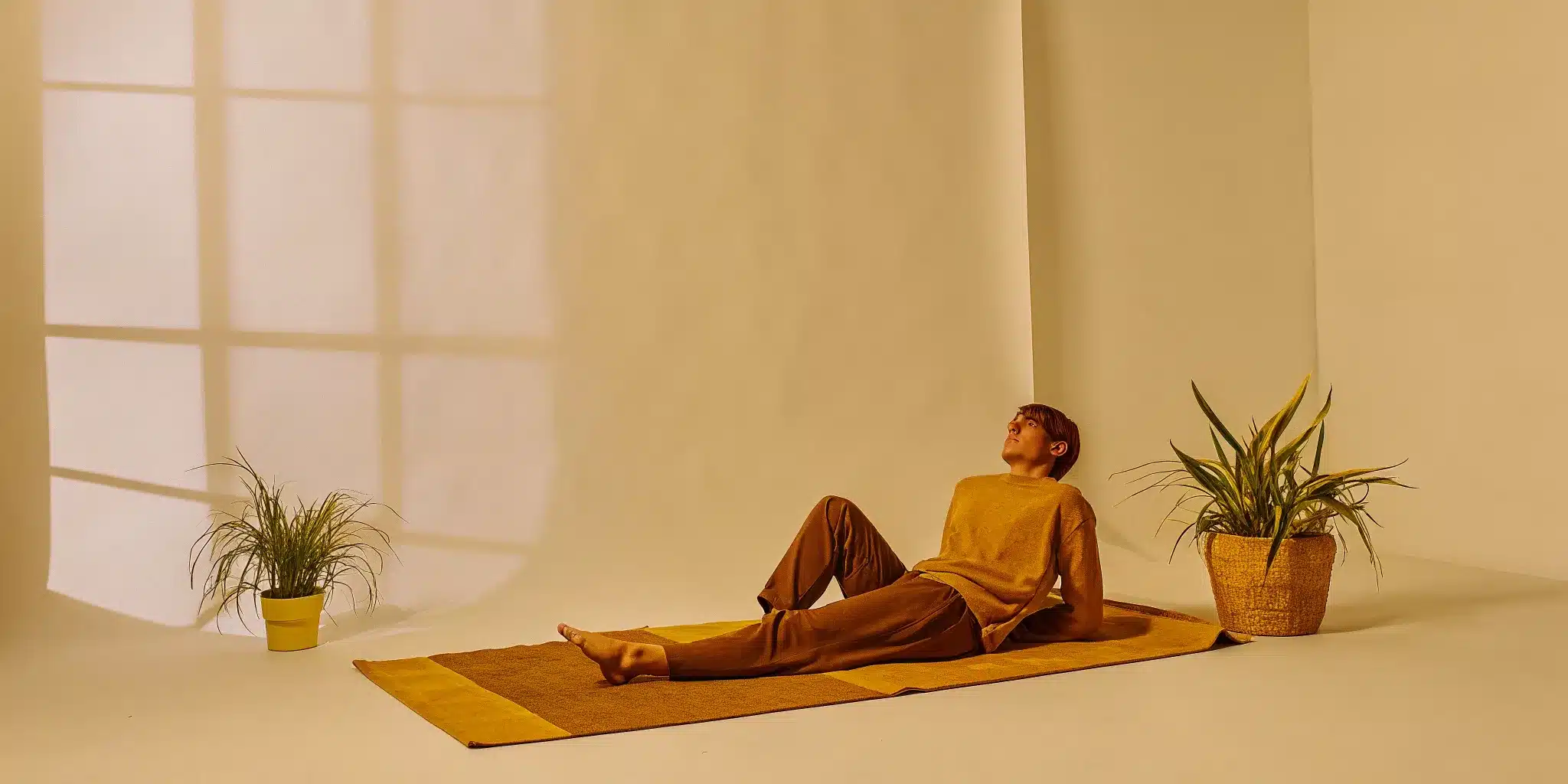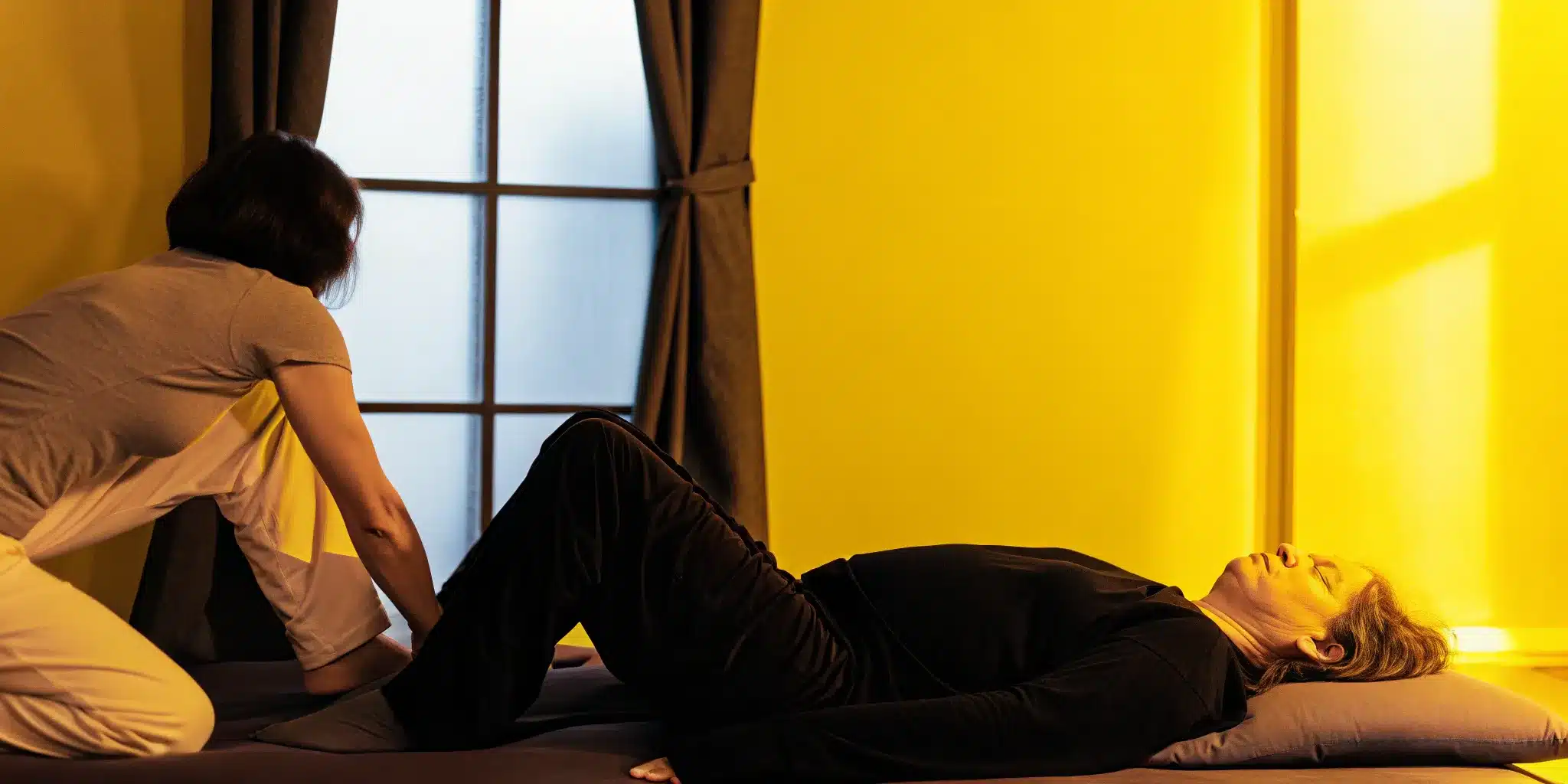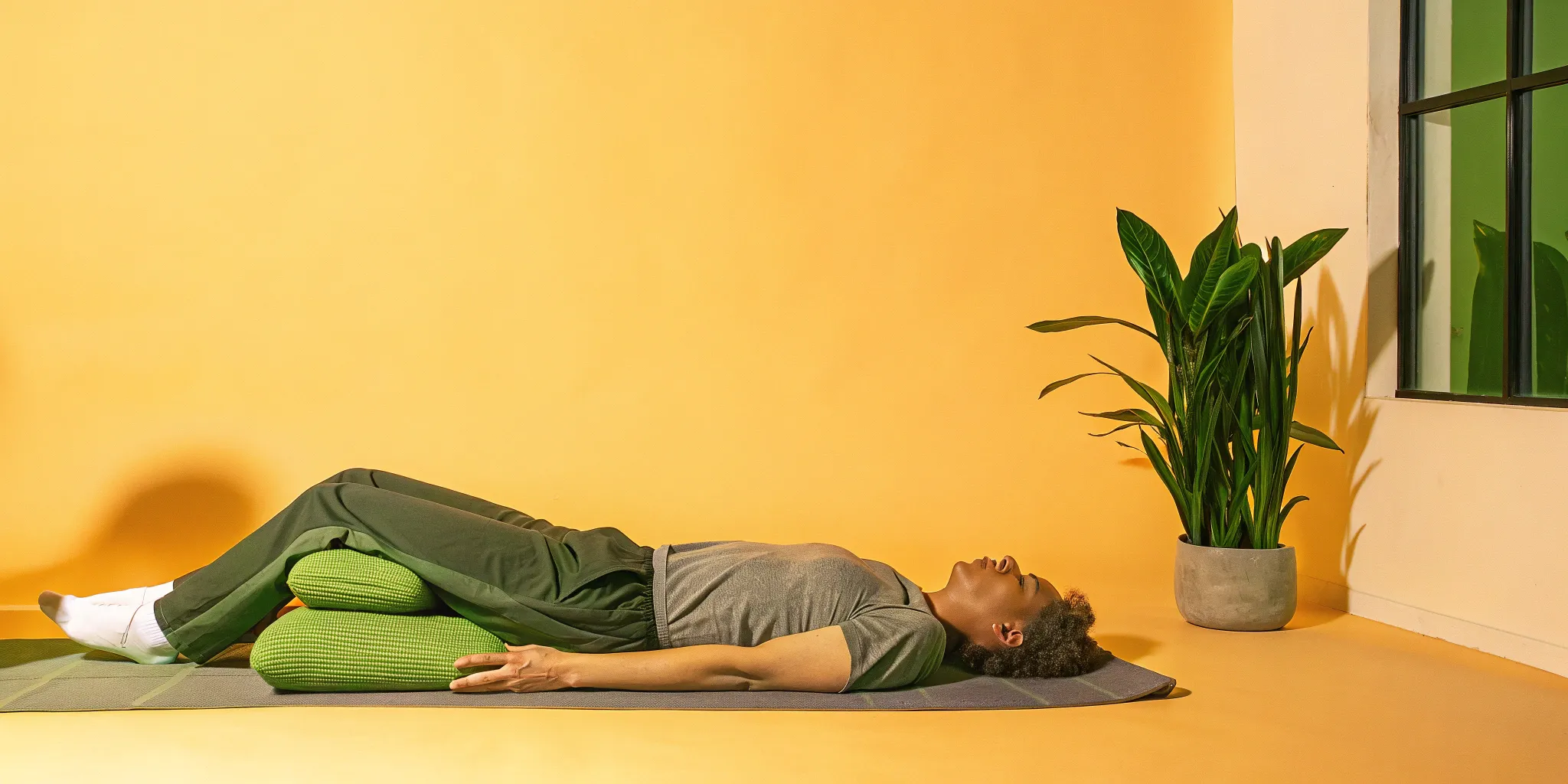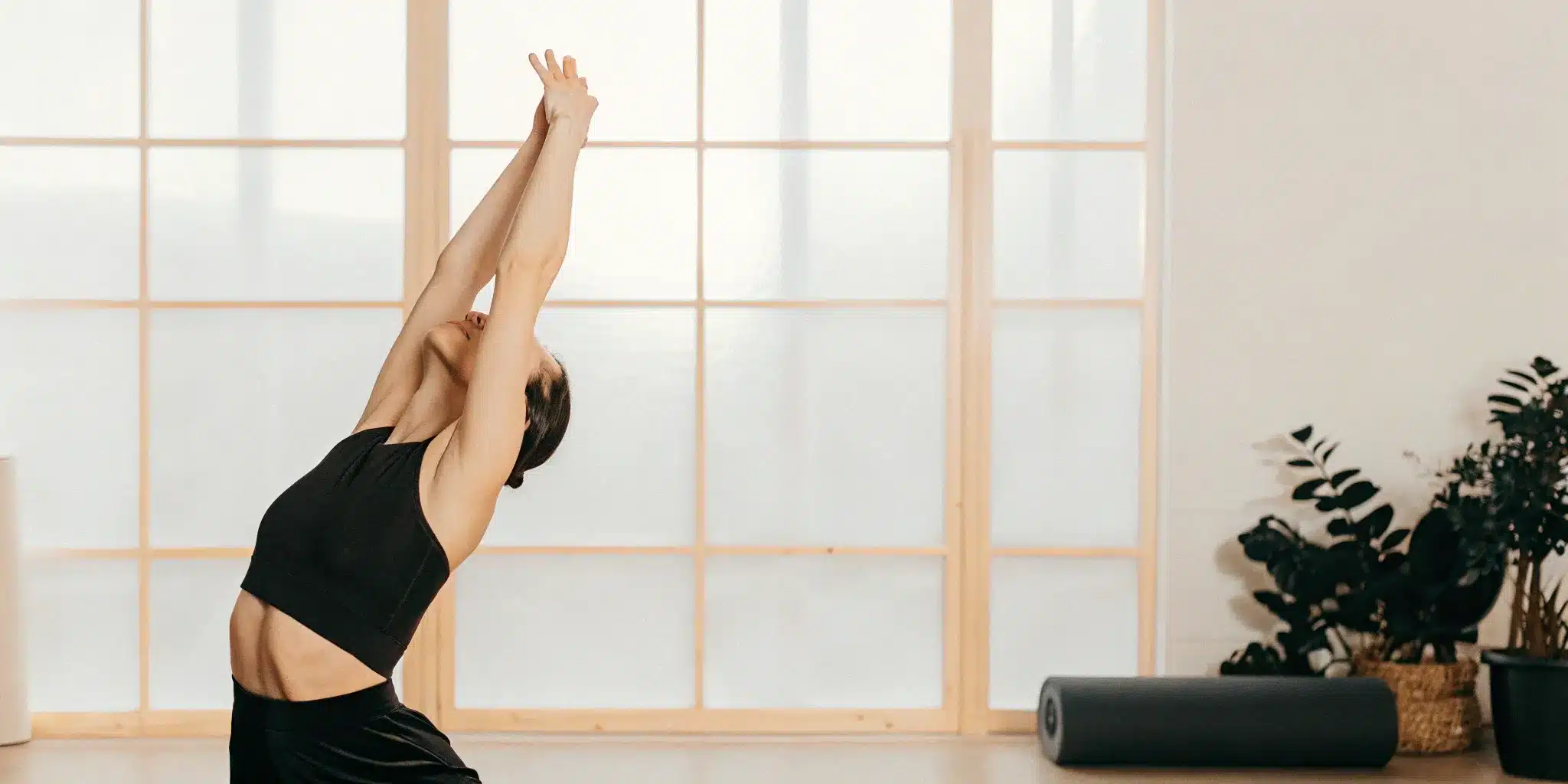Many people believe that flexibility is something you’re either born with or you’re not. This couldn’t be further from the truth. Flexibility isn’t a genetic gift; it’s a skill that anyone can develop with patience and the right approach. You don’t have to be able to do the splits to feel the benefits. For most of us, the goal is simply to get through the day without aches and pains holding us back. This guide will demystify the process and show you how to improve flexibility regardless of your starting point. We’ll cover safe, effective methods and targeted routines designed to ease chronic discomfort and help you feel more capable and confident in your body.
Key Takeaways
- Warm-Up with Movement, Cool Down with Holds: Prepare your body for activity with dynamic stretches like arm circles to increase blood flow. After you’re done, use static stretches—holding a position for at least 30 seconds—to lengthen muscles and improve your long-term flexibility.
- Prioritize Consistency and Safety Over Intensity: Lasting relief comes from a regular, gentle routine, not from pushing through pain. Aim to stretch a few times per week, always warming up first and holding each stretch without bouncing to prevent injury.
- Consider Assisted Stretching for Targeted Results: If you’re struggling with chronic pain or have hit a plateau, 1-on-1 assisted stretching can provide a deeper release. A trained professional can safely target specific problem areas to improve mobility and offer lasting relief.
What Is Flexibility and Why Does It Matter?
When we talk about feeling good in our bodies, flexibility is a huge piece of the puzzle. So, what is it, exactly? Think of flexibility as your muscles’ ability to stretch. It’s different from mobility, which is about how freely your joints can move through their full range of motion. While they aren’t the same, they work together to help you move with ease and without pain.
Improving your flexibility isn’t just for yogis or gymnasts; it’s for anyone who wants to tie their shoes without groaning, reach for something on the top shelf, or simply get through the day with fewer aches. When your muscles are pliable and resilient, your entire body functions better. It reduces your risk of injury, eases tension, and can even help you stand a little taller. Making time for flexibility is a simple yet powerful way to invest in your long-term health and daily comfort, helping you feel more at home in your own body.
How Your Body Responds to Stretching
Think of your muscles like rubber bands. When they’re warm and stretched regularly, they’re supple and elastic. But if they sit unused, they can become tight and stiff. Stretching is the process that keeps your muscles and joints flexible and ready for action. When you stretch, you’re gently lengthening your muscle fibers, which helps release that feeling of tightness.
This process does more than just relieve tension. Stretching also increases blood flow to your muscles. This is fantastic news for your body, as improved circulation delivers more oxygen and essential nutrients to your tissues. This can help reduce soreness after activity and speed up recovery time, allowing your muscles to repair and rebuild more efficiently.
The Link Between Flexibility and Pain Relief
If you live with persistent aches and pains, improving your flexibility can be a game-changer. Tight muscles are often a major contributor to discomfort, especially in the back, neck, and shoulders. When muscles are stiff, they can pull on your joints and throw your posture out of alignment, leading to a cycle of strain and pain.
Regular flexibility exercises can help break this cycle. By lengthening and relaxing tight muscles, you can significantly reduce aches and pains and lower your risk of injury. Stretching eases muscle tension, which not only feels good in the moment but also helps your muscles operate more efficiently. This can lead to better posture and less strain on your body throughout the day, offering a sustainable path toward lasting pain relief.
How Better Flexibility Improves Daily Movement
The benefits of flexibility show up in the small moments of your day. It’s what allows you to perform everyday tasks like bending or reaching with ease and comfort. Think about it: picking up something you dropped, looking over your shoulder to back out of a parking spot, or playing with your kids or grandkids on the floor—all these simple movements rely on your body’s flexibility.
When your muscles are flexible, you move more freely and efficiently. You’re not fighting against your own body’s tightness, which means less strain and more energy for the things you love. This freedom of movement translates into greater confidence and independence. By focusing on flexibility, you’re not just stretching your muscles; you’re expanding your ability to participate fully and comfortably in your own life.
What Are the Best Stretching Techniques?
When you think about stretching, you probably picture holding a pose for a certain amount of time. While that’s one way to do it, there are several different techniques, each with its own purpose and benefits. Understanding the main types of stretching can help you choose the right approach for your body, whether you’re warming up for a walk, cooling down after a workout, or working to relieve chronic tightness. Let’s look at three of the most effective methods.
Use Static Stretching for Deep Muscle Release
Static stretching is likely the technique you’re most familiar with. It involves extending a muscle to a point of gentle tension and holding that position for a period of time. This method is fantastic for increasing overall flexibility and calming your nervous system. The key is to perform static stretches when your muscles are already warm, like after a workout or a brisk walk. Cold muscles don’t stretch as effectively and are more prone to injury. To get the most out of it, focus on your flexibility by holding each stretch for at least 20 seconds, breathing deeply the entire time.
Use Dynamic Stretching to Prepare for Movement
Unlike static stretching where you hold a pose, dynamic stretching involves active movements that take your body through its full range of motion. Think of exercises like arm circles, leg swings, or torso twists. This type of stretching is the perfect way to warm up before any physical activity. It gets your blood flowing, activates your muscles, and prepares your joints for movement, which can help prevent injuries. The goal isn’t to push your limits but to gently and gradually prepare your muscles for activity. Incorporating a few minutes of dynamic stretching before you exercise can make a huge difference in how your body feels and performs.
Try PNF Stretching for Deeper Results
Proprioceptive Neuromuscular Facilitation, or PNF, is a more advanced stretching technique that can produce significant gains in flexibility. It typically involves a “contract-relax” sequence where you stretch a muscle, then contract it against resistance for a few seconds before relaxing and stretching it again, often a little deeper. This method essentially tricks your nervous system into allowing your muscles to lengthen more than they normally would. Because it combines both passive and active stretching, PNF is a highly effective method for improving mobility and is often used in physical therapy and assisted stretching sessions.
How Often Should You Stretch to See Results?
Improving your flexibility is a marathon, not a sprint. It’s all about consistency. Your body needs time to adapt and release long-held tension, so patience is key. According to UC Davis Health, it can take several weeks of daily effort to see big changes in your range of motion. The good news is that every stretch is a step in the right direction. By creating a regular routine, you give your muscles the consistent attention they need to lengthen, which can lead to lasting pain relief and better movement.
Create Your Weekly Stretching Schedule
So, what does a consistent routine look like? A great starting point is to aim to stretch at least twice a week, focusing on major muscle groups like your hamstrings and hips. If you have specific areas that are constantly stiff, you’ll benefit from more frequent attention. For those extra tight spots, try to stretch them every day, even if it’s just for a few minutes. The goal is to find a rhythm that feels sustainable, because the most effective schedule is the one you can stick with.
Find the Right Duration for Each Stretch
How long you hold a stretch is just as important as how often you do it. To give your muscles time to relax, hold each stretch for at least 20 seconds and repeat it two to four times. This helps prevent your muscle’s natural reflex from resisting the movement. For even better results, especially in stubborn areas, try holding your stretches for longer. Experts suggest that while 30 seconds is effective, you can get even better results by holding for one to two minutes.
The Best Times of Day to Stretch
You can stretch anytime, but you’ll get more out of it if your muscles are warm. Cold muscles are less pliable, so the ideal time to stretch is right after your workout, when they are receptive. If you’re not working out, a light warm-up like a five-minute walk will do the trick. You can also incorporate stretching into your daily life by making it part of your morning or bedtime routine. A few gentle stretches when you wake up can ease stiffness, while a session before bed can help release the day’s tension.
Which Stretches Target Your Aches and Pains?
Aches and pains aren’t one-size-fits-all, and your stretching routine shouldn’t be either. The tension you hold in your shoulders after a long day at the computer is very different from the tightness you feel in your hips after a long walk or a spin class. The key to finding relief is to listen to your body and focus your efforts on the areas that are calling out for attention. By targeting specific muscle groups, you can release stiffness, improve your range of motion, and get back to moving more freely.
Think of your body as a map. Where are the tight spots? Is it your lower back that complains when you get out of bed? Or maybe your neck feels stiff after a long drive? Identifying these areas is the first step. Once you know where the tension lives, you can use specific stretches to gently coax those muscles into a more relaxed state. This targeted approach is much more effective than a generic routine because it addresses the root of your discomfort. Below, we’ll explore some simple stretches for common problem areas to help you get started on your path to feeling better.
Stretches to Relieve Neck and Shoulder Tension
If you spend hours hunched over a desk or a phone, you’re probably very familiar with neck and shoulder tension. This area is notorious for holding stress, leading to stiffness and headaches. Gentle stretching helps keep these muscles and joints flexible and able to move well. To start, try a simple ear-to-shoulder stretch: sit up tall and slowly tilt your right ear toward your right shoulder until you feel a gentle pull along the left side of your neck. Hold for 20-30 seconds, then repeat on the other side. You can also incorporate shoulder rolls, lifting your shoulders up toward your ears, then rolling them back and down to alleviate tension and reset your posture.
Stretches to Improve Hip and Leg Mobility
Sitting for long periods can leave your hips and hamstrings feeling incredibly tight, which can contribute to lower back pain and limited mobility. Giving these areas some extra attention is crucial for comfortable movement. A great stretch you can do while seated is the figure-four stretch. Cross your right ankle over your left knee, keeping your right foot flexed. Gently press down on your right knee to deepen the stretch in your hip and glute. If your hamstrings are the main issue, try a simple forward fold from a standing or seated position. Remember to focus on your tightest spots; spending a little more time on them can make a big difference.
Stretches to Support Your Core and Back
A flexible back and engaged core are the foundation of good posture and pain-free movement. Gentle stretches can help maintain spinal health and relieve the aches that come from daily activities. The cat-cow stretch is a fantastic way to warm up your spine. Start on your hands and knees, then inhale as you drop your belly and look up (cow), and exhale as you round your spine and tuck your chin (cat). A gentle twist, where you lie on your back and drop both knees to one side, can also help release tension in the lower back. Incorporating these movements can help you feel more relaxed and reduce aches and pains over time.
How Can You Stretch Safely and Avoid Injury?
Stretching is one of the best things you can do for your body, but how you do it makes all the difference. The goal is to release tension and improve your range of motion, not create new aches and pains. When you’re already dealing with chronic pain, the last thing you want is to accidentally make it worse. The good news is that stretching safely is simple. It’s all about listening to your body and following a few foundational rules that protect your muscles and joints from strain. This approach ensures that you’re building flexibility, not risking further injury.
By focusing on proper form and being mindful of how you feel, you can create a stretching routine that helps you feel better, move more freely, and avoid setbacks. Think of it as a conversation with your muscles—you want to gently encourage them to relax, not force them into submission. Pushing too hard or moving too quickly can do more harm than good, leading to micro-tears in the muscle fibers. These simple tips will help you get the most out of every stretch while keeping your body safe and happy.
Why You Should Always Warm Up First
Jumping straight into deep stretches when your muscles are “cold” is a recipe for injury. Think of your muscles like a rubber band; if you try to stretch a cold, stiff one, it’s more likely to snap. When it’s warm, however, it’s pliable and stretches easily. That’s why a proper warm-up is non-negotiable. The best time to stretch is actually after a workout when your blood is already flowing and your muscles are warm and receptive. If you’re stretching on its own, start with five to 10 minutes of light activity to get your heart rate up. This could be a brisk walk, jogging in place, or doing a few jumping jacks. This simple step prepares your muscles for a safe and effective flexibility routine.
Know the Warning Signs of Pushing Too Hard
The golden rule of stretching is that you should feel tension, but never pain. A successful stretch creates a gentle pulling sensation in the muscle you’re targeting. It might feel slightly uncomfortable, but it shouldn’t be sharp, stabbing, or painful. If you feel any real pain, you’ve pushed too far. This is your body’s signal to ease up immediately. Pushing through pain can lead to muscle strains or tears, which will only sideline your progress. Learning to listen to your body is the most important skill in your flexibility journey. Back off the stretch until the pain subsides and you’re back in that “gentle pull” zone. Remember, consistency is far more effective than intensity.
Common Stretching Mistakes to Avoid
Two of the most common stretching mistakes are bouncing and not holding the stretch long enough. You might have seen people in old workout videos bouncing in a stretch, but this is actually counterproductive. Bouncing can trigger your muscle’s stretch reflex, causing it to tighten up to protect itself—the exact opposite of what you want. Instead, ease into each stretch with a slow, smooth movement. Once you feel that gentle tension, hold it steady. Aim to hold each static stretch for about 30 seconds. This gives your muscle tissue enough time to relax and lengthen. Rushing through your stretches won’t give you the lasting benefits you’re looking for. Slow, steady, and gentle is the safest and most effective approach.
When Should You Consider Professional Stretching?
Stretching on your own is a fantastic habit, but sometimes you hit a plateau or need a more targeted approach to deal with persistent tightness and pain. If you feel like you’re not getting the results you want, or you’re unsure if you’re even doing the stretches correctly, it might be time to work with a professional. Assisted stretching takes the guesswork out of the equation. A trained practitioner can help you move past your limitations safely, providing a level of release that’s often difficult to achieve by yourself. It’s a way to invest in your body’s long-term health and mobility, especially when chronic aches and pains are holding you back from living fully.
Think of it this way: you can follow a recipe at home, but a chef can show you techniques you’d never discover on your own. A stretching professional does the same for your body. They understand the intricate connections between muscle groups and can identify imbalances you might not be aware of. This expert guidance ensures that you’re not just stretching, but stretching with purpose to address the root cause of your discomfort. It’s a proactive step toward feeling better in your body every single day.
The Benefits of 1-on-1 Assisted Stretching
Working with a professional in a 1-on-1 setting allows you to get a stretch that is completely customized to your body’s needs. Unlike stretching alone, a practitioner can gently guide your limbs to achieve a deeper, more effective range of motion. They know exactly how to target specific muscle groups that are causing you trouble, ensuring you get relief right where you need it. This personalized approach not only improves your flexibility but also helps release deep-seated muscle tension and promotes a profound sense of relaxation. Plus, having an expert ensure you’re using the proper technique is a great way to support injury prevention and build a stronger, more resilient body.
What to Expect From Your First Session
Walking into your first assisted stretching session can feel a little mysterious, but it’s a straightforward and relaxing process. It will begin with a conversation and a thorough assessment of your body’s current mobility and flexibility levels. This helps your practitioner understand your unique patterns of tightness, your history with pain, and your personal goals. From there, they will create a personalized stretching routine just for you. During the stretch, your practitioner will communicate with you constantly, explaining the purpose of each movement and making sure you remain comfortable the entire time. They will gently guide you through various stretches, and your only job is to relax and breathe.
Is Assisted Stretching Right for You?
If you’re wondering whether professional stretching is a good fit, think about your goals. Are you dealing with chronic pain that limits your daily activities? Are you recovering from an injury and need a safe way to regain mobility? Or maybe you have specific goals, like improving your posture or wanting to enhance your overall physical performance in a sport you love. If you answered yes to any of these, assisted stretching could be incredibly beneficial. It’s also a great option if you simply prefer the accountability and professional guidance that comes from working with an expert. It’s a dedicated time for you to focus on your body and make real, lasting progress.
Related Articles
- 10 Benefits of Stretching: Feel & Move Better – STRETCHMED
- Benefits of a 1-on-1 Stretch Therapist: Improve Flexibility & Reduce Pain – STRETCHMED
- Contraindications of Stretching: A Safety Guide – STRETCHMED
- One on One Assisted Stretching: A Complete Guide – STRETCHMED
- How Long to Hold a Stretch for Max Flexibility – STRETCHMED
Frequently Asked Questions
I’m in pain right now. Is it still safe for me to stretch? This is such an important question, and the answer is to be gentle and listen to your body. Light, gentle stretching can often help ease the tension that contributes to pain, but it should never make the pain worse. If you’re dealing with a specific injury or severe chronic pain, it’s a great idea to start with professional guidance. A trained practitioner can help you stretch safely and effectively without aggravating your condition.
What’s the difference between feeling a good stretch and actual pain? Learning to tell the difference is key to stretching safely. A proper stretch should feel like a gentle, pulling tension in the belly of the muscle. It might be slightly uncomfortable, but it’s a productive feeling. Pain, on the other hand, is a warning sign. It often feels sharp, stabbing, or electric. If you feel anything like that, you’ve gone too far and should immediately ease up on the stretch.
I’ve tried stretching before and didn’t see results. Why might that be? It’s a common frustration, and it usually comes down to a few key things. Often, it’s a matter of consistency, as flexibility takes time to build. Another common reason is not holding stretches long enough for the muscle to actually relax and lengthen—aim for at least 20-30 seconds. Finally, stretching “cold” muscles is far less effective. Making sure your body is warm first can make all the difference in your results.
With so many types of stretches, which one is best for me? The best stretch really depends on your goal at that moment. Think of dynamic stretching, which involves active movements like leg swings, as your preparation for activity. It’s perfect for a warm-up. Static stretching, where you hold a pose, is best for cooling down after a workout or for dedicated flexibility sessions when your muscles are already warm. It helps release tension and improve your overall range of motion.
How is professional assisted stretching different from what I do on my own? While stretching on your own is great, assisted stretching allows you to achieve a deeper and more targeted release that’s difficult to get by yourself. A trained practitioner can gently guide your body into optimal positions, isolating specific muscles and ensuring you get the most effective stretch possible without risking injury. They also provide a personalized approach, identifying your unique patterns of tightness to help address the root cause of your discomfort.







